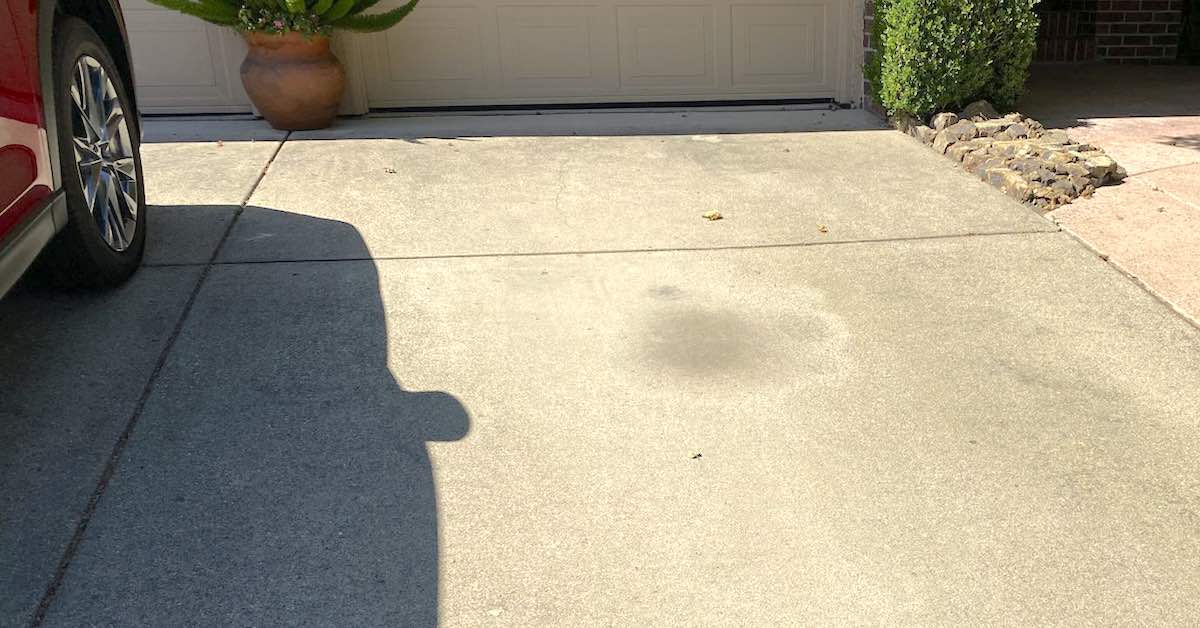
Concrete driveways are built to last, but they’re also high-traffic zones that take a serious beating. From vehicles that leak oil to lawn equipment spills, stubborn stains can set in fast — and once they’re in, they don’t go quietly.
Pressure washing offers a powerful solution to remove even the toughest oil stains, but there’s a right way and a wrong way to tackle the job. This article will walk you through how to do it properly — and why it matters. 🧼💪
🧱 Why Oil Stains Are So Hard to Remove
Oil penetrates concrete because concrete is porous. The stain seeps into the tiny holes and micro-cracks, bonding with the surface and becoming resistant to water alone. Over time, sunlight and heat can “bake” these stains in, making them darker and more difficult to lift.
If you leave oil stains untreated, they can:
- Break down concrete sealants
- Create slick and dangerous surfaces
- Lower your home’s curb appeal
- Attract more dirt and grime
- Make your property look neglected
💧 Can Pressure Washing Remove Oil Stains?
Yes — but not on its own. Pressure washing is most effective when paired with degreasers or detergents that break down oil at the molecular level.
Pressure alone might blast the surface clean, but it often won’t lift deep-set stains without chemical help. That’s why the combination of pressure + cleaning agent is key. 🔑
🧼 Supplies You’ll Need
To clean concrete driveways with oil stains, gather the following:
- Pressure washer (2,000–3,500 PSI recommended)
- Degreaser or concrete cleaner specifically for oil
- Scrub brush or stiff broom
- Hot water (preferred, if your pressure washer supports it)
- Surface cleaner attachment (optional, but speeds things up)
- Protective gear (gloves, goggles)
Browse Amazon Here For Top Rated Power Washers And Accessories
🚿 Step-by-Step: Removing Oil Stains from Concrete
1. Sweep and Inspect
Clear leaves, debris, and loose dirt to reveal all stains. Look for both fresh and set-in spots.
2. Apply Degreaser
Spray or pour the degreaser directly onto each stain. Let it sit for 10–20 minutes (or as directed by the product). Do not let it dry.
3. Agitate with a Brush
Use a stiff brush to scrub the stain and work the cleaner deep into the surface.
4. Pressure Wash the Area
Use a 25° nozzle (or a surface cleaner attachment) and keep the nozzle 6–12 inches from the surface. Sweep in slow, even motions.
5. Repeat If Needed
Stubborn stains may require a second application or a stronger degreaser.
6. Optional: Apply Concrete Sealer
Once dry, apply a penetrating sealer to prevent future stains from soaking in.
🔥 Pro Tip: Use Hot Water
Hot water breaks down oil faster and lifts it more effectively than cold water. If you have a hot water pressure washer, you’ll get better results in less time.
If you don’t have one, applying a hot water rinse after the pressure wash can still help finish the job.
🧪 Best Degreasers for Oil Stains
Here are a few products that work well with pressure washers:
| Product | Type | Notes |
|---|---|---|
| Simple Green Oxy | Eco-friendly | Good for light-to-moderate stains |
| Purple Power Degreaser | Heavy-duty solvent | Fast acting, strong odor |
| Oil Eater Cleaner | Biodegradable | Great for garage floors too |
| Krud Kutter Concrete | Industrial grade | Designed for driveways & walkways |
Always test in a small area first.
❌ Common Mistakes to Avoid
- Skipping the degreaser – water alone won’t lift the stain
- Using too much pressure – can etch or damage concrete
- Not scrubbing first – detergents need help to penetrate
- Letting cleaner dry – reduces effectiveness
- Ignoring runoff – oil-contaminated water may need proper disposal
🧼 Preventing Future Stains
Once clean, protect your concrete with a penetrating sealer or driveway coating. These create an invisible layer that repels oil, water, and stains.
Additional prevention tips:
✅ Clean up drips and spills immediately
✅ Place oil-catching mats under vehicles
✅ Reseal your driveway every 2–3 years
✅ Pressure wash lightly every 6–12 months
🛠️ When to Call a Pro
If the stain has been sitting for years, or if the driveway is large or sloped, a professional may be worth the investment.
Pros often have:
- Commercial hot water units
- Industrial degreasers
- Recovery systems for runoff
- Sealing services included
It could save you hours of effort and deliver flawless results.
✅ Final Thoughts
Oil stains may seem like a permanent scar on your concrete, but with the right approach, they’re completely beatable. Pressure washing — paired with a quality degreaser — can restore your driveway to a fresh, clean appearance that boosts curb appeal and keeps your home looking sharp.
So the next time you spot an oil blot under your car, don’t panic — fire up the pressure washer, grab a good degreaser, and take back your driveway. 🛢️🧼🛻
Browse Amazon Here For Top Rated Power Washers And Accessories



